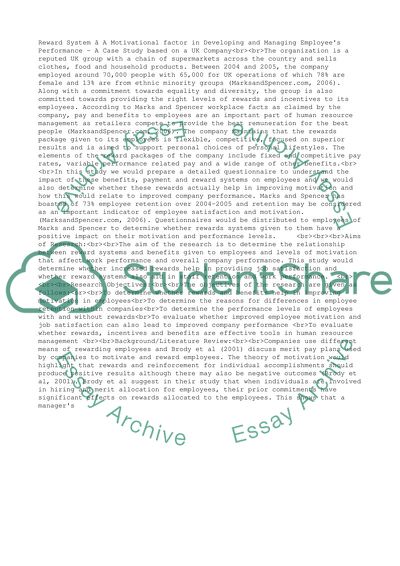Cite this document
(“Reward System and Employees Performance Essay Example | Topics and Well Written Essays - 1750 words”, n.d.)
Retrieved from https://studentshare.org/management/1510880-reward-system-and-employees-performance
Retrieved from https://studentshare.org/management/1510880-reward-system-and-employees-performance
(Reward System and Employees Performance Essay Example | Topics and Well Written Essays - 1750 Words)
https://studentshare.org/management/1510880-reward-system-and-employees-performance.
https://studentshare.org/management/1510880-reward-system-and-employees-performance.
“Reward System and Employees Performance Essay Example | Topics and Well Written Essays - 1750 Words”, n.d. https://studentshare.org/management/1510880-reward-system-and-employees-performance.


